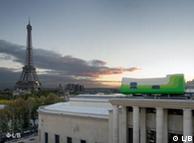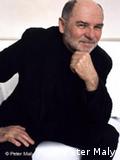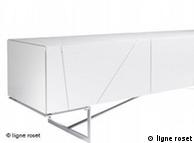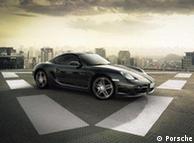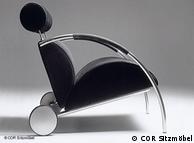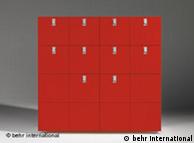我十幾年前在此觀賞過"董其昌的世界/時代"
日子很快
銭選(せんせん、男性、生没年不詳)は、宋末元初の文人画家、篆刻家である。生年は1235年前後、卒年は1301年以降と推定される。江蘇呉興(湖州)の人。
字は舜挙、号は玉潭・巽峯・清癯老人・習懶翁・霅谿翁など。
銭選は南宋末に進士に及第するも生涯にわたって仕官していない。宋朝滅亡後は蘇州呉興に移り住み、他の遺民画家と文人グループを形成し、「呉興八俊」と称揚される。元朝最大の芸術家とされる趙孟頫と文雅の交友があり、書画三昧の生活を送る。趙孟頫がフビライに招聘されると他の文人達もこれに従ったが銭選は潔しとせず、ひとり故郷に隠逸した。このことが遺民としての忠誠心の現れとして後世に評価されている。
画の力量は職業画家と間違われるほど巧みで、晩年はそのためにかえって贋作が横行した。これを防ぐ為に画に詩文を書き入れたという。南宋画院の硬直した画風に反駁し、北宋の趙伯駒、李公鱗、趙昌などの筆法を採り入れ、復古主義的な画風を確立した。この主張は元末四大家に受け継がれ、文人画の隆盛に繋がった。趙孟頫に「文人画とは?」と問われて「隷体の画である」と返答したとされるが、この逸話は文人画論に著名である。
銭選・趙孟頫・李カン・高克恭・商琦を元初五大家とする呼称もある。
落款印が拙劣であることなどから職工に依頼せず、印章を自刻したと思われるが、篆刻家の先駆けでもあった。
1970年から1971年にかけて発掘された明の
太祖の第10子である魯王
朱檀の陵墓(
山東省鄒県)から銭選の画(蓮花図)が出土した。中国の学術的な発掘調査によって出土した絵画の作者が同定できた例はこれのみである。
這兩本參考書台灣都有翻譯本:
錢選《王羲之觀鵝圖卷》元紙本設色23.1×92.3 公分
美國紐約大都會博物館 ......
修竹林間爽致多
閑亭坦腹意如何
為書道德遺方士
留得風流一愛鵝
Art Review | 'Anatomy of a Masterpiece'
The Art Is in the Detail

Metropolitan Museum of Art
Detail of Qian Xuan's “Wang Xizhi Watching Geese.” More Photos >
Published: March 14, 2008
From his terrace, the world is blue and green — mountains and trees — or almost green. Spring is on the way; the geese are back. One, then two, alight on the river, with more still invisible but close behind. Pavilion living! The only way. With the city somewhere down there, and nature everywhere up here, he watches mist rise. River meets sky.
Skip to next paragraph 
Metropolitan Museum of Art
“Wang Xizhi Watching Geese,” ink and color on a paper scroll, painted around 1295 by Qian Xuan and on view in “Anatomy of a Masterpiece: How to Read Chinese Paintings,” at the Met. More Photos »

Metropolitan Museum of Art
A detail from Han Gan’s “Night-Shining White” (eighth century). More Photos >
The calm watcher is the fourth-century scholar-artist Wang Xizhi, father of classical calligraphy and model for living an active life in retreat. He is depicted by the painter Qian Xuan, another connoisseur of reclusion, in a 13th-century handscroll at the Metropolitan Museum of Art. The scroll is in “Anatomy of a Masterpiece: How to Read Chinese Paintings,” a spare, studious show that offers, along with many stimulations, a retreat from worldly tumult — the religious fervor, the courtly pomp, the expressive self-promotion — that fills much of the museum.
This exhibition is also a refuge from the hurly-burly of Asia Week in New York, which is now in session and has mushroomed into three weeks this year. Dealers are in town from abroad with special shows; others arrive next week. Two art fairs are returning. Add a passel of events devoted to contemporary Asian art, along with the auctions, and the situation is clear: a marathon stretch of looking, judging, sorting, tsk-tsking and oh-mying, not to mention wheeling and dealing. Naturally, the urge to get away from it all can be strong.
I mean, isn’t part of the point of our Western passion for Asian art to find a serenity that we can’t seem to cook up on our own, a metabolic slow-down, a less-is-more state of grace? One 15th-century Chinese writer recorded such an ideal in a lifestyle wish list that includes: “A nice cottage. A clean table. A clear sky with a beautiful moon. A vase of flowers. No cares of the world.” He was describing the optimum environment for looking at art, but also for living artfully.
“Anatomy of a Masterpiece” has all the elements on his list, and one more: instruction. The curator, Maxwell K. Hearn of the Met’s Asian art department, has given the museum’s lofty Chinese painting and calligraphy galleries the intimacy of a teaching collection, with a limited number of objects accompanied by short labels and photographic enlargements of details. The labels are thematic and ruminative, approaching paintings through ideas rather than dynasties. The photographs are a revelation.
To many visitors Chinese brush-and-ink painting, with its faint images on time-darkened silk, has a generic look; entire galleries register as a soft brown blur. Close and repeated looking slowly reveals those images and brings them to life in a startling way; partly this is a matter of individual vision evolving, sharpening. But photographs speed the process, cutting through obscuring patinas, clarifying what is otherwise hard to see, and in dramatic ways.
I can easily imagine Mr. Hearn’s photo-supplemented show creating converts to Chinese painting; it is museology as consciousness-raising. (Yale University Press is publishing an accompanying book.)
Mr. Hearn has the immense advantage of working with some of the most famous Chinese paintings in existence, and he opens with one of them, “Night-Shining White,” a picture of a spirited horse by Han Gan, who lived in the ninth century during the Tang dynasty. By that point the criteria for a successful painting had been established, and the first was the ability to convey a subject’s vitality, or life-energy.
Han was a master of this, bringing an animal to life with contour lines and calligraphic strokes that look almost joltingly vibrant. And if that dynamism escapes us, the testimony of generations of connoisseurs is there to confirm it: the horse is hedged in by a halo of seals applied by scholars and artists over the centuries. Each is a stamp of approval; together they are a storm of applause.
During the Tang dynasty, figure painting was the prestige genre, and landscape subsidiary. With time this hierarchy was reversed. Landscape became the big picture, figures mere dots to establish scale. And the scale was tremendous: towering mountains, limitless vistas, sourceless rivers, as befitted an image of nature that was an emblem of creation itself, a vision of matter forever consolidating and evaporating .
The uses of that vision varied. In “Summer Mountains,” attributed to the Southern Song painter Qu Ding, the landscape is descriptive, a pileup of painstakingly rendered details, from minute curved bridges to an elaborate temple tucked in a notch. By contrast, in Guo Xi’s water-soaked “Old Trees, Level Distance,” emotion reigns. The landscape looks as shadowed with regret as a Mahler song. Two old men, tiny figures, meet for a parting meal before one begins a journey. Where is he going? Will he return? Or is this a last goodbye? They men are dwarfed by a landscape seen through tears.
Several generations later, in Zhao Mengfu’s “Twin Pines, Level Distance,” something new appears. No more realism; no more romanticism; in a sense, no more painting. Now the landscape image is an extension of writing, a form of embodied thought, an essence of landscapeness, a text to be read. In the contemporary West we have a term for this: conceptual art.
And my guess is that if certain Chinese artists in the Met show could leap the centuries, they would feel at home in the concept-intensive environment of the current Whitney Biennial, with Carol Bove’s towering driftwood sculpture, or Charles Long’s skeins of river debris, or even the text-based art of Dexter Sinister (Stuart Bailey and David Reinfurt) snaking down a computer screen.
Not that Chinese painting ever abandons sheer visual punch. Liang Kai’s “Poet Strolling by a Marshy Bank,” with its vision of the natural world gashed open and turned inside out, is a shock to the system no matter how often you see it. So is Zude’s painting of an old man’s face as a fissured topography of rock and earth. And Wu Bin’s depiction of Buddhist saints as a cavalcade of rubber-limbed freaks.
Then there is the peculiar vivacity of calligraphy. If Zhao’s “Twin Pines, Level Distance” is the pictorial equivalent of writing, the show’s great example of his actual script, “Four Anecdotes From the Life of Wang Xizhi,” seems to have an aural dimension, like a dramatic reading. So expressive are the linear twists and turns of the brush, the pressure and weights of ink, the spatial punctuations, that you can practically hear his voice.
No doubt that voice often spoke in isolation. In his later years, Zhao alternated life in the quotidian world, with its markets and politics, with periods of withdrawal. And the passage he copied in calligraphy at the Met is a story from the life of Wang Xizhi, the man with the vista of blue and green, the man who loved geese.
In the story, Wang is visiting a Daoist monk who owns a flock of geese, exceptionally beautiful ones. Sell them to me, Wang begs the monk, who replies that he will not. They argue; they wrangle; they spar. It’s exhausting. At last they swing a deal. The monk says that if Wang, such a famed calligrapher, will copy two chapters of Laozi’s Daoist scripture for him, he will give him the birds. Wang makes the copy, which takes all afternoon. Then the geese are his and he returns home, jubilant.
Home, one assumes, is the high terrace in Qian Xuan’s painting. And there, one likes to imagine, Wang Xizhi set the birds free. The legend is that his calligraphic style, the one that shaped so much later Chinese art, was inspired by watching geese fly, observing the bend of their wings, the curve of their necks as they descended to the river. Such are the benefits of the pavilion life: fresh ideas and a sharpened eye. You can acquire both in the Met’s pacific Chinese painting galleries and carry them to the hubbub that is Asia Week outside.
“Anatomy of a Masterpiece” runs through Aug. 10 at the Metropolitan Museum of Art, (212) 535-7710, metmuseum.org.
錢選(1239年?~1301年?)字舜舉,號玉潭,別號巽峰等,中國元代畫家,吳興(今浙江湖州)人,工青綠山水(blue and green)。錢選- Wikipedia 日文版更豐富:

















